A Guide to Visiting Cotopaxi National Park, Ecuador
One of the most popular things to do in mainland Ecuador is visiting Cotopaxi National Park. It is the second largest national park in the country and also home to the second highest peak: Cotopaxi volcano.
In this guide we’ll detail all the things you can do in the national park and give you some useful tips on when to visit, how long to go for, where to stay and how to get there so you can have the best experience possible.
If you’d like to see our Cotopaxi National Park adventures, then check out our dedicated Cotopaxi video on our YouTube Channel. For more Ecuador videos check out our Ecuador Playlist.
Disclosure: This post may contain affiliate links, which means we may receive a small commission if you click a link and purchase something. Clicking these links won’t cost you anything, but it will help us to keep this site up and running! Learn more about our affiliate policy.
About Cotopaxi National Park
Cotopaxi National Park (Parque Nacional Cotopaxi) is located to the south of Ecuador’s capital city, Quito. This 333.9 sq km (128.9 sq mi) nature reserve extends into the provinces of Cotopaxi, Pichincha and Napo. It’s the second largest national park in Ecuador after Yasuni National Park in the Ecuadorian Amazon.
The national park’s main attraction is without doubt Cotopaxi volcano, the second highest peak in Ecuador at 5,897 m (19,347 ft). In Quechua, ‘Cotopaxi’ translates to “neck of the moon”, which possibly comes from the volcano’s crescent moon shaped crater.
What’s unique about Cotopaxi volcano is that it has a nearly symmetrical cone shape. Plus, it’s also one of the most active volcanoes in the country. Since the 16th century, the stratovolcano has erupted over 50 times. The most recent eruption happened in 2015. Although it wasn’t a major eruption, the surrounding area had to be evacuated and was on high alert for a few months.
There are also some dormant volcanoes next to Cotopaxi, such as Ruminawi and Sincholagua volcanoes, which form part of the Pacific Ring of Fire.



Best Things to Do in Cotopaxi National Park
1. Hike Up to José Rivas Refuge on Cotopaxi Volcano
Located on the north face of Cotopaxi at 4,864 m (15,958 ft) above sea level is Refugio José Rivas. It’s a popular hiking option amongst visitors. If you join a guided day tour, you’ll normally get driven all the way up to the car park (4,600 m / 15,091 ft).
From the car park, you’ll climb up the volcanic slopes for about 2 km with an elevation gain of just over 200 m. Depending on the weather conditions, it can be an easy to moderate hike. Of course, the altitude can slow you down even on a clear day. The hike will obviously be more uncomfortable in high winds and with poor visibility.
Once you’re at the refuge, you’ll normally have a little rest, eat some lunch or get some hot chocolate. Having a warm cuppa on the side of a volcano is really rewarding!
You can also get a novelty ‘passport’ stamp at the refuge. If you want one, then make sure to bring a notebook or travel journal and don’t stamp your original passport. This can make it invalid, since it’s not an official border stamp.
Some day tours will include a hike up to the glacier first, followed by a little rest at the refuge before the optional mountain biking down the volcano. This tour can cost around $35-40 USD.
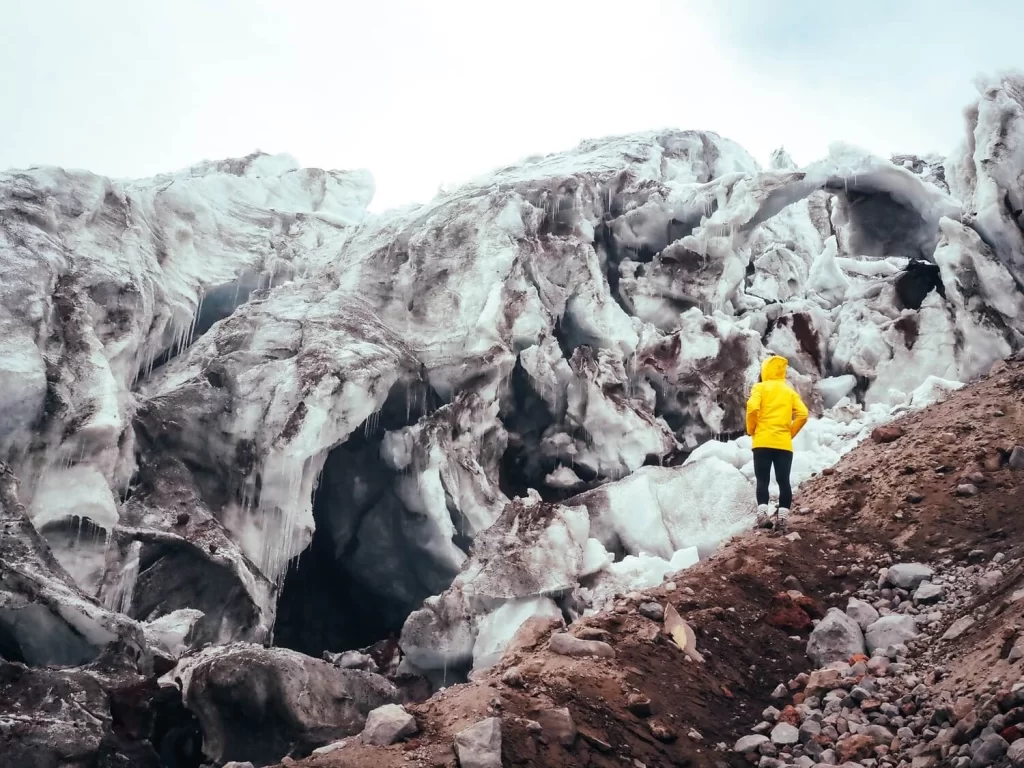
2. Hike Up to Cotopaxi Glacier
One of the best and most popular hikes in Cotopaxi National Park has to be the route up to Cotopaxi Glacier. If you’re on a tour, you’ll start your hike from the car park located at approximately 4,600 m (15,091 ft). From there you can take the slightly longer switchback route or the more direct but steeper route towards José Rivas Refuge.
Once you reach the refuge, you’ll need to ascend another 100 m to reach the glacier. From this point onwards you’d need special gear to go any further, but being at around 5,000m (16,400 ft) above sea level on one of the most beautiful volcanoes in the world is pretty impressive already!
A guided hike up to Cotopaxi glacier can cost around $35-40 USD per person.


3. Mountain Bike Down Cotopaxi
A very popular activity in Cotopaxi National Park is to rent a mountain bike and cycle down Cotopaxi Volcano. Depending on your tour, you’d normally hike up to the glacier and/or the refuge first and then cycle down the volcano from the car park located at 4,600 m (15,091 ft) afterwards.
It’s good to know that the bikes aren’t the greatest – which was confirmed for us by a couple who mountain bike regularly in the Alps. We initially thought that our bottom halves would hurt the most afterwards, but in reality our arms were impacted the most thanks to the constant shaking. Regardless, it was still an experience we’ll never forget. After all, how often do you get the chance to cycle down an active volcano?
We had to pay an extra $10 USD per person for bike rental in the park. This cost might be included in your tour, but it’s worth checking when booking.

4. Summit Cotopaxi Volcano
If you have a lot of hiking / mountaineering experience and want to challenge yourself, then you can consider summiting Cotopaxi Volcano. It’s definitely not for the faint hearted because you’ll be climbing up to 5,897 m (19,347 ft). For reference, Everest South Base Camp is located at an altitude of 5,364 m (17,598 ft).
The climb normally takes place over two days to help you to acclimatise better. We wouldn’t recommend going with anyone offering a one day summit, as it would be way too quick.
You would start your journey in the afternoon on day one with a 1-2 hour hike up to Refugio José Rivas (4,864 m / 15,958 ft). You’ll have dinner here, get advice on glacier hiking and have a few hours of rest before you start your summit attempt around midnight. After a short trek up to the glacier, you’ll start the hardest part of the climb. The aim is to reach the summit for sunrise which would be a truly unforgettable experience from that high up. We would love to return and attempt to summit Cotopaxi volcano in the future!
Summitting the volcano can cost around $300 USD per person.
5. Go Horseback Riding in Cotopaxi National Park
If you’re not keen on hiking up or mountain biking down Cotopaxi volcano, then you could consider a more relaxing activity, such as horseback riding. It’ll give you the chance to see more of the national park surrounding Cotopaxi and the other volcanoes.
Your guide will select the right horse for you and, depending on your riding experience, you can always challenge yourself with some galloping or just enjoy the scenery at a more leisurely pace.
Depending on the type of tour you book, horseback riding can cost around $40 USD per person.
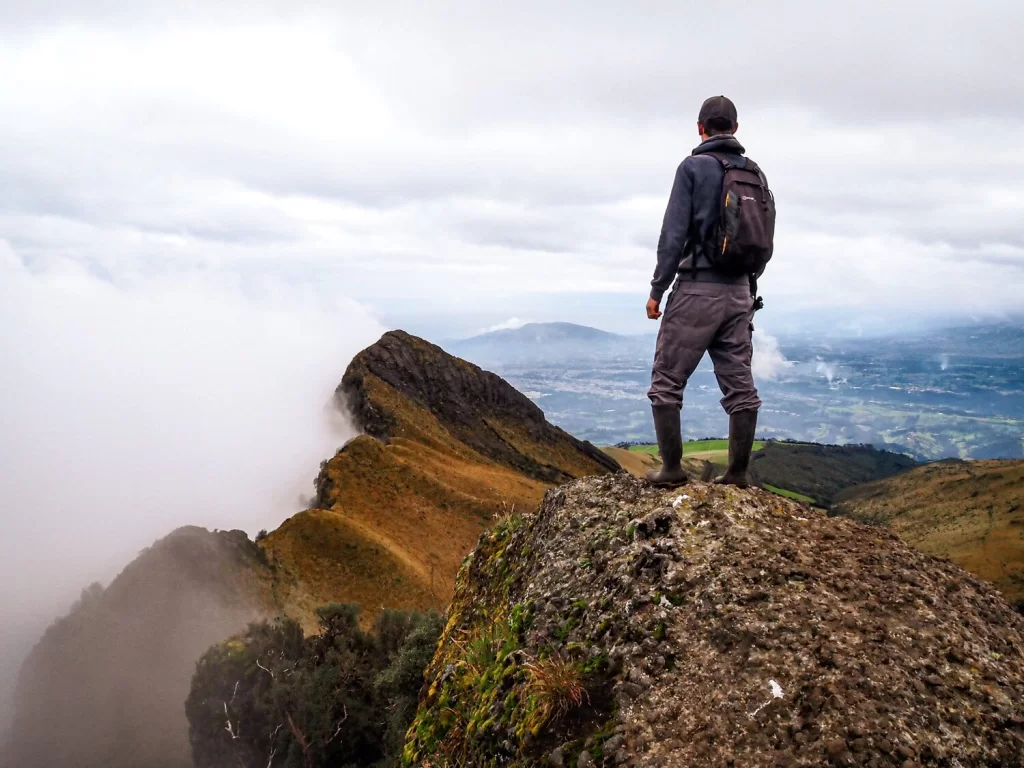


6. Climb Pasochoa Volcano
If you’re staying in Cotopaxi National Park for a few days, then consider adding another volcano hike to your itinerary. There are plenty of volcanoes to choose from, but the two most popular ones are Pasochoa and Rumiñahui.
Pasochoa is 4,200 m (13,779 ft) above sea level, which makes it a great acclimatisation hike, especially if you want to hike up to Cotopaxi glacier or even summit the volcano. There are a few routes up Pasochoa, and it takes around 3-4 hours to reach the summit. The way down will be much faster and could only take around 2.5-3 hours.
It’s a beautiful hike to do in Cotopaxi National Park and if you have a clear day you can even see the Pasochoa Forest Reserve which is located inside the crater rim.
Top Tip. If you stay at the Secret Garden Cotopaxi hostel then your hike to Pasochoa volcano is included in your tour package.

7. Summit Rumiñahui Volcano
Rumiñahui volcano is another popular but more challenging hike in Cotopaxi National Park. It has an altitude of 4,721 m (15,488 ft), so about 500 metres higher than Pasochoa. The volcano has three triangular summits. Most people attempt the central summit, called Rumiñahui Central, at 4,630 m (15,190 ft) above sea level.
The trail starts at the shores of Lake Limpiopungo about 3,850 m (12,630 ft) above sea level. It is definitely a more challenging hike than Pasochoa with some scrambling towards the top. It takes a good 3-4 hours to reach the summit and about 2-3 hours to descend.
A guided hike would cost between $40-50 per person.
8. Enjoy the Views from Lake Limpiopungo
The beautiful Lake Limpiopungo is located on the slopes of the inactive Rumiñahui volcano. Most hikers attempting to summit Rumiñahui start their hike from this lagoon.
If you’re visiting on a clear day, you get some postcard perfect views of Cotopaxi volcano in the background. If you’re not planning on climbing the volcano, you can just walk around the lake and enjoy the flora and fauna.

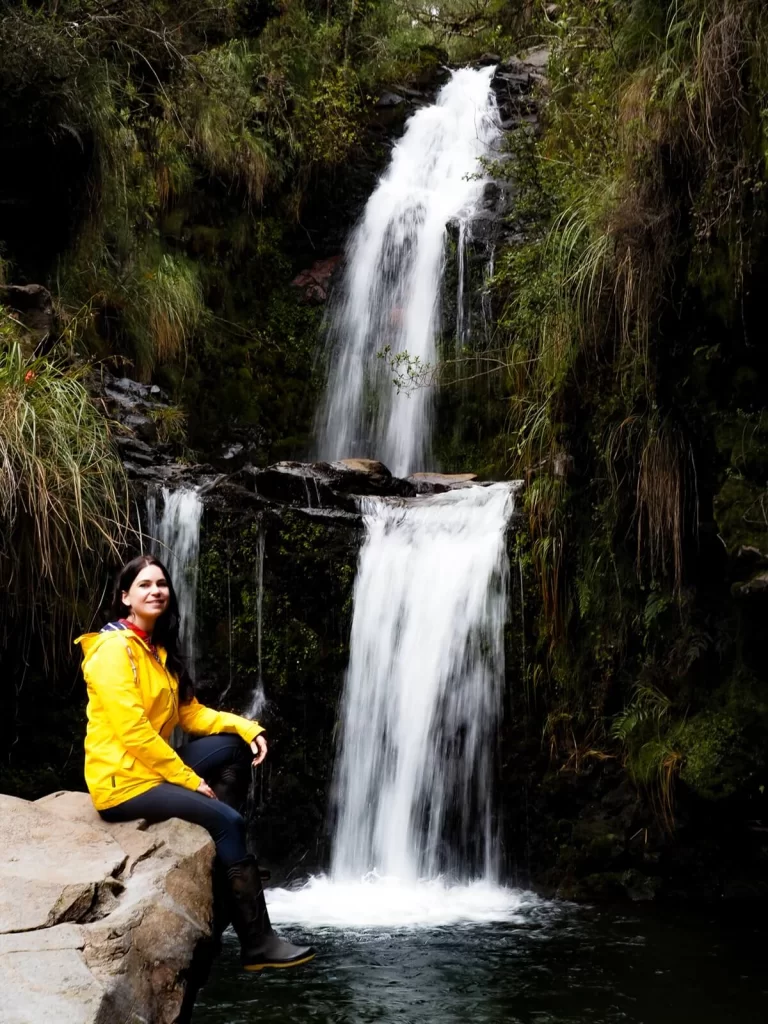

9. Enchanted Forest and Waterfall Trek
If you’re staying at the Secret Garden Cotopaxi Hostel, then you can join their daily enchanted forest and waterfall trek. This activity is offered for free for their guests, which is fantastic.
You’ll have to put on some wellies and be prepared to cross the river a few times as you make your way through the beautiful forest just behind the hostel. It’s a very fun but short hike with the reward of a beautiful waterfall at the end. If you’re brave enough, you can even jump into the freezing cold pool in front of the waterfall.

Best Time to Visit Cotopaxi National Park
Ideally, you’d want to time your visit to Cotopaxi National Park during the nicer and slightly warmer months. You definitely wouldn’t want to visit in the rainiest and snowiest months of the year and miss your chance to see Cotopaxi volcano.
The worst months are March to May followed by September to November. You may also want to avoid some of the busiest months to visit Cotopaxi which are December and January, but some sources suggest that the national park is quite busy all the way up until May.
Therefore, the best time to visit Cotopaxi National Park is between June and September for a quieter visit. Of course, you could still experience all four seasons in one day, and the evenings are still going to be cold. However, at least you’d be giving yourself the best chance for blue skies.
For reference, we visited Cotopaxi National Park at the end of May and we didn’t have any issues booking our trip pretty last minute. Plus, the weather conditions were pretty great too and we managed to see Cotopaxi without any cloud cover quite a few times. Although it was still pretty cold and some groups had much worse weather conditions during their visit just a few days before us.
How Long to Stay in Cotopaxi National Park
Day trips from Quito and other locations are very popular for those short on time. It’s a great way to see the national park and you should consider a visit even if you can’t stay for longer.
However, if you’re just planning your Ecuador itinerary, we highly recommend staying for a few nights in Cotopaxi National Park. That way, you’ll have the chance to see and experience more of the national park’s attractions. You can climb other volcanoes, such as Rumiñahui or Pasochoa. Plus, you’ll have more chance of seeing Cotopaxi without any cloud cover, which normally happens early in the morning and later in the evening.



Where to Stay in Cotopaxi National Park
There are quite a few accommodation options in and around Cotopaxi National Park depending on your interests and budget. Below are a few hostel and lodge (hacienda) options you can check out:
- Secret Garden Cotopaxi (book it via Secret Garden Quito): We stayed here and have a detailed guide of what you can expect from your stay. It’s the perfect place for backpackers, couples, and solo travellers. Their package offer is very good value for money.
- Hosteria Tambopaxi Lodge: This lodge is located pretty close to Cotopaxi volcano, so you can enjoy some fantastic views from here on a clear day. It’s a good option for families and couples. They also offer a ton of activities including horseback riding.
- Hacienda El Porvenir: Set in a traditional Andean house, it’s another great place to stay when visiting Cotopaxi National Park. Again, it’s perfect for families or couples. They also offer activities for an additional cost.

How to Get to Cotopaxi National Park
There are two main entrances to Cotopaxi National Park:
- North Entrance: located near Machachi.
- South Entrance: located near the village of Lasso.
The southern entrance is where most tours will enter the park from, since it’s just off the Panamerican Highway. If you’re on a day tour, you don’t even need to worry about your transport to the national park.
If you’re staying at certain accommodations such as the Secret Garden Hostel, Tambopaxi Lodge, Hacienda el Porvenir or Chilcabamba, then you’ll need to enter through the north entrance.
Depending on where you’re coming from, you can reach these entrances with public buses or private transport arranged by your hostel or lodge. For reference, our transport from Quito to the Secret Garden Hostel was included in our package deal. However, we had to pay extra for our transport to Baños after our stay.
Public buses between Machachi and Quito or Baños only cost a few dollars per person. We recommend asking your accommodation about the best ways to get there when booking.

Tips For Visiting Cotopaxi National Park
Make sure to acclimatise. Quito is already at 2,800 m (9,350 ft) above sea level, so staying there for a few days will help you acclimatise. Cotopaxi National Park is at least another 1,000 m (3,280 ft) higher than Quito, and you’ll be at nearly 5000 m (16,400 ft) if you plan on hiking up to Cotopaxi glacier. Altitude sickness is no joke, so acclimatising and being prepared is very important. This is another reason why we recommend staying a few nights in the park.
Dress warm. At such high elevation, the weather is normally cold and unpredictable. Make sure to dress appropriately for the activities you do to avoid getting cold. If you’re staying for a few nights, then your accommodation will likely have a cozy fireplace and some warm ponchos you can wear in the evenings. However, if you’re only there for a day, then you have to come prepared.
Go early. For the best chance to see Cotopaxi volcano without cloud cover, you need to arrive early in the morning. Sometimes it also clears in the evening, so by staying at least one night in the park, you’ll give yourself the best chance to admire this stunning volcano.
Have cash. We recommend having enough cash to cover any additional costs. We had to pay a percentage of our hostel stay in cash on site and also had to pay for any extra tours or drinks and snacks that weren’t included in our package deal.
Bring food. This really depends on how you visit Cotopaxi National Park, where you’re staying and what’s included in your package. Some day tours might not include lunch, and there aren’t many places to get food within the park. Luckily, our hostel included all meals and some snacks during our stay which was fantastic. So it’s always a good idea to read the ‘what’s included’ section before booking any trips.

Final Thoughts on Visiting Cotopaxi National Park
Visiting Cotopaxi National Park and staying there for a few nights was one of the many highlights of our Ecuador trip. The hike up to Cotopaxi glacier, then mountain biking down the side of the volcano, was definitely the climax of our trip to the national park. We also got incredibly lucky with the weather and visibility, although it was still very cold at that altitude.
Staying in the national park for a few nights was a fantastic idea as we managed to do a lot more than just Cotopaxi volcano. Climbing Pasochoa volcano and going on some other activities arranged by the Secret Garden Cotopaxi Hostel allowed us to see more of this beautiful part of the country.
Have you ever been to Cotopaxi National Park before? If so, what was your experience? If not, would you want to add the national park to your Ecuador itinerary? Let us know in the comments below.
Now, let your adventure begin,

Our Top Travel Resources
Accommodation: For hotels we always use Booking.com and Hostelworld for hostels. We also book longer stays on Airbnb or Vrbo.
Flights: To find the best flight prices we always check Skyscanner, Google Flights or WayAway. Then we also check the airlines’ websites too for comparison.
Car Rentals: We use Discover Cars when we want to rent a car as it compares local, national and international companies.
Activities: If we book organised tours we always check either GetYourGuide or Viator.
Foreign Currency: Whenever we can we prefer to pay in local currency and for that we always use our Wise card. We can easily withdraw money from the ATM or pay by card at most shops and restaurants.
Travel Insurance: We never go anywhere without travel insurance. You never know what will happen on your trip, so good travel insurance like SafetyWing can protect you in case of injury, illness, theft and cancellations.
eSIM and VPN: To get data abroad we use Airalo which is an app that allows you to download a prepaid eSIM to your phone in over 190 countries. Make sure to have a VPN to avoid hackers accessing your personal data when using public WIFI. We use Surfshark which is the only VPN that offers one account on unlimited devices.

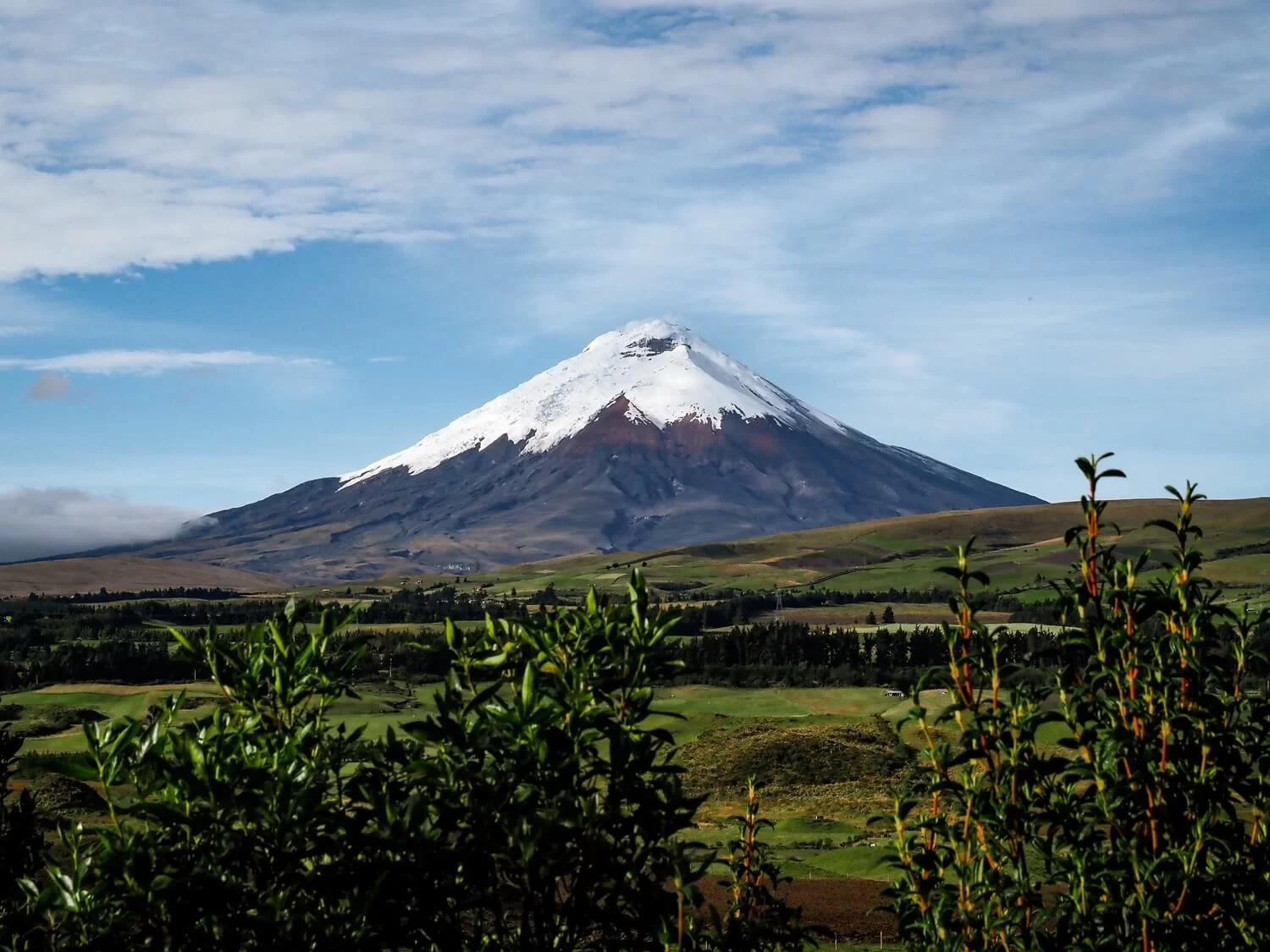



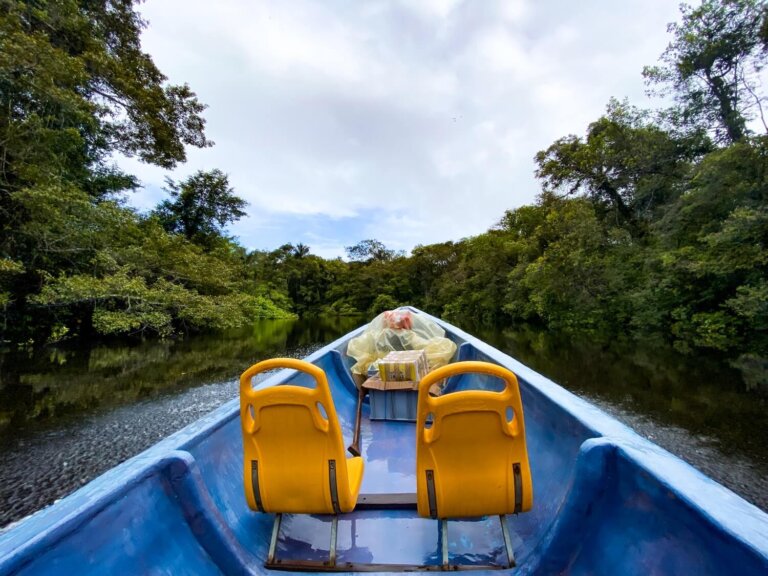




Great blog Kitti 🙂 Thanks for sharing x
Thank you so much Karan!
Hi. Thanks for this. I read somewhere that the park doesn’t open until 9am, and also that it is good to get there early. I would much prefer to get in early. Do you know if this is possible?
Hi Christopher, our accommodation was within the park, therefore we’re uncertain if you could get into the park before it opens if you visit independently.